- Home
- P. T. Deutermann
The Nugget Page 5
The Nugget Read online
Page 5
Checklist, I remembered suddenly. You forgot to run your checklist, especially armament. We had about a half hour. I told Rooster what I was doing, and he proceeded to check out his twin .30-caliber machine guns by firing a burst off to one side of the formation, undoubtedly scaring the hell out of the divisions above and below me. I explained to Rooster that we tested guns when ordered to do so, and only armed the big bomb just before we began our dive.
“Got it, Boss.”
I ran through my takeoff and bombing checklists while keeping one eye on my division leader. We were flying just south of west through some gathering cumulonimbus cloud formations. I’d missed one item on the takeoff list, which was to cycle the dive brakes. I wouldn’t be able to do that while flying tight formation. I was reaching for my canteen when a Zero slashed by the formation’s right side, machine guns blazing, just as somebody yelled: Bandits! on the tactical freq. Wide awake now, I nestled in closer to my division lead, wondering where our fighters were. Back at our carrier dealing with their bandits. Suddenly my lead got rid of his 1,000-pounder and began a turn to the right. A stream of tracers was starting to envelop him as I turned with him.
“Dive brakes, Boss,” Rooster yelled. “Hit the brakes, then smoke the bastard.”
It’s fighter time, I thought. This was what my two .50-cal. machine guns were for. I pulled the engine power to fifty percent and deployed the dive brakes as we turned together to get away from the Jap fighter. That stream of tracers got uncomfortably close and then, as we slowed sharply, the Zero whipped past me, which allowed me to bank into position behind him and loose a long burst of .50-cal. right at him. I firewalled the throttle, retracted the brakes, and stayed with him. Suddenly I was flying through thick black smoke, and then the Zero mushroomed into a huge ball of orange fire, went inverted, and slanted down towards the sea.
Rooster was cheering me on with a variety of rebel yells, until he stopped abruptly and started shooting at yet another Jap fighter that was making a high side pass on us. I could see Rooster knew his business because he didn’t shoot at the Jap fighter but out in front of it, directing his stream of bullets on an intercepting arc that shattered the Jap’s canopy in a spray of blood. Rooster let out some more rebel yells, but then I realized we were alone. I looked around for my division leader but couldn’t find him—or anyone else. I couldn’t hear them, either. One moment the Bombing Six freq was a case study in audio pandemonium, the next a scary, static-filled silence. I swiveled my head around but couldn’t see anybody else. I checked my altitude: 17,300 feet. We’d been flying at 15,000. All I could see up ahead were huge, ice-white clouds, boiling up towards the edge of the atmosphere, bent on cooking up one big-ass thunderstorm.
And an island. One lonely atoll, bigger than the one we’d hit this morning but not by much. The reef was the usual volcanic circle surrounding bright blue water. With ships.
“Rooster,” I called. “I think that’s our target.”
“Well, hell, Boss, let’s go bomb the bastids. Ain’t nothin’ else to do.”
I looked to see where the sun was, which was almost overhead, so it didn’t matter from which direction I hit them. I made a 360 sky sweep, hoping to see more bombers, but it looked like we were alone with the thunderclouds. Just then an updraft rocked us pretty bad, so I slipped down to 10,000 feet to get out of the cloud boil-up. There were five or six ships down there, but one bigger than all the rest. From this altitude I couldn’t tell what they were, other than they didn’t appear to be moving.
Anchored, then. My kinda ship.
“Okay, here we go,” I told Rooster. “Feel free to strafe when we pull out.”
“Hell with that, I’m gonna strafe in and out, Boss. Just like they did at Pearl, remember?”
“Too well, Rooster. Much too well. Here we go.”
I reached down and armed the thumper. Then I rolled in, throttling back and extending the dive brakes to stabilize the plane as we dropped down through two miles of increasingly unsettled air. The SBD had a crude telescopic bombsight mounted above the instrument panel. Normally in a ship attack, you had to calculate the lead angle and basically aim ahead of the ship so that the bomb arrived where the ship would be, not where it was right now. But if these guys were anchored, and I could see no signs of a wake on my target, then I could aim right at him, which is what I did. Rooster started calling altitude from his bare-bones instrument panel in the gunner’s cockpit, while I concentrated on lining up my dive. When he called 2,500 feet I let her go and began my pullout, changing course to the left to make it harder for any AA gunners. I pulled back on the stick and experienced the familiar press of g-forces. I had to be careful here: pull too hard and black out, which meant a crash. Pull too light and you’d hit the water, with the same results.
I thought I felt some AA fire, but then there was a large explosion behind us. Rooster started up with the rebel yells again as I leveled off at 500 feet and began a banking turn to get back upstairs.
“Yee-haw, Boss,” Rooster shouted. “Had to be an ammo ship. Lookit that, lookit that. God damn! Burn, you yellow-bellied cowards. Remember Pearl Harbor, you mangy dog sonsabitches!”
I looked over my shoulder and saw a titanic cloud of smoke and fire, laced with arcs of fiery debris dropping all over the atoll. The cloud was big enough to obscure the harbor and all the ships that were in it. I added power to get the hell out of there, punching through bright white clouds on the way up to cruising altitude. I realized I still hadn’t heard anything on the Bombing Six frequency. Where the hell was everybody?
“Rooster—that radio working?”
“Yes, suh, I see a—whoops. I lied. No green light. Radio is tits-up, Boss. Sorry.”
“Rooster, turn on the homer.”
“Homer is up, Boss,” he announced a moment later. “Mother bears one four five, good tone.”
Well, I thought: our mission had been to bomb that harbor, and bomb it we did. So now it was time to go find the Big E. Getting into the pattern with no radio comms might get interesting, though.
SIX
We were intercepted 30 miles out by one of our fighters. I gave him the hand sign for no radio. He rocked his wings, flew ahead of us, and led me safely over and through all those trigger-happy cruisers and destroyers right into the approach pattern. We weren’t alone. It looked as if most of the catch-game strike had made it back about twenty minutes before we did. The fighter-biter banked away and headed back to his CAP station. I had plenty of time and gas to go through the landing checklist with Rooster, and then I joined a holding pattern of three SBDs five miles off the carrier’s starboard bow. The western horizon behind the carrier was getting darker and darker as all those thunder-bumpers got organized. We were orbiting at 2,000 feet and those storms were probably 30 to 40 miles away, which meant that their heads were bumping up against the stratosphere. Fortunately the land-launch course for max winds over the deck was still almost due east.
My landing was uneventful, although I was surprised to see quite a bit of white fire-fighting foam on the port side of the flight deck, and what looked like some big gouges in the wooden flight deck. The flight deck crew directed me to a spot over on the starboard side and then signaled for me to shut her down. Once in the ready room we got the full story from the other pilots. Formation discipline had become the first casualty when the Jap fighters jumped the unprotected Bombing Six gaggle. The SBD is a bomber, not a fighter. Doctrine called for dumping any heavy ordnance if the bandit problem was bad enough, just as my division lead and most of the others had done. Apparently I was the only one who’d held on to his bomb and actually used it.
Rooster and I huddled with the post-strike intel officers and told our story. We were claiming two Zeros and an ammo ship. They’d have to take that on faith as the SBD didn’t have a gun camera forward like fighters did. Once the ship secured from flight quarters the skipper called a quick meeting. We’d had one loss, one of the NavCad pilots and his gunner, who’d been seen
to crash and blow up in the ocean after two Zeros shot it up. Otherwise, the SBDs had given good account of themselves, knocking down several Zeros.
“That’s a pretty good showing,” the skipper began. “Considering we had no fighter cover. They were all back here around Enterprise, fighting off a formation of Bettys. One of the Bettys lost half a wing and was on fire when he elected to car-qual onboard the Big E. That’s all the foam you saw topside. CAG was wounded in the left forearm and leg, but he’s determined to get back in the cockpit, and knowing him, he will.”
“Are we gonna try another strike?” one of the guys asked.
“Negative; it seems that the Lexington took two torpedoes from a Jap sub. She’s still afloat and under her own power, but you saw what those Jap torpedoes can do back in Pearl, so she’s probably Bremerton bound. Saratoga is getting fixed up in Pearl, so for right now, it’s the Big E and Yorktown to cover the whole Pacific.
“There was one bright spot: Nugget Bobby Steele here,” he said, pointing at me. “Flamed one Zero, and his gunner made a second Zero’s canopy turn all red for a possible. Then he ducked into a cloud and took his thousand-pounder to Malawit atoll and parked it in an anchored ammunition ship, which blew up in spectacular fashion. Well done, Nugget.”
There were noises of approval from my squadron mates, grateful that someone had managed to uphold the honor of Bombing Six on what was supposed to be an air group strike. I reminded myself to make sure that Rooster received appropriate recognition. I would have never thought of that hit-the-dive-brakes tactic, even though we’d been taught that back in flight school. I had to admit it: I’d clutched up when those tracers began to envelop my cockpit.
The post-attack meeting broke up and we all headed for the wardroom, not having eaten anything since very early this morning. Now that we were at war, the wardroom remained open on a round-the-clock basis and that night was no exception. Lieutenant Cox stopped by my table as I was finishing up.
“I meant that ‘well done,’” he said. “It allowed me to report that we sank at least one substantial ship, which was enough to mollify the admiral. How’d you manage that?”
“A Zero got on my tail. I deployed the dive brakes and cut power, which forced the Zero to bust past me and then I flamed him. After that, I couldn’t find anybody in all those big clouds, but I could see an island, so I decided to head for that. There were some ships and they were all anchored, so I chose the biggest one and got lucky.”
“Dive brakes,” the skipper said. “That’s fighter stuff. They teaching that in SBD operational training?”
“They are, but I kinda froze up. It was my gunner, Baynes, who yelled for dive brakes.”
“The Rooster Baynes?” the skipper asked. I nodded.
“That boy is a genu-wine piece of work,” he said with a smile. “You want him for your permanent gunner?”
“If that’s possible, yes, sir, I would. Why’s he called Rooster?”
“Go on liberty with him one time. You’ll see. Heavy-duty skirt chaser. He still do that rebel yell bullshit?”
“Often,” I said. “And loud, too.”
“I wish the Japs could hear that just once,” he said. “I’ll see if I can get him for you. Again, good job today.”
I went back to my stateroom, suddenly dead tired. Chuck’s stuff was all still there. I wondered what they did in this situation. He hadn’t been declared killed in action, just missing. There was a knock on the door. It was Yeoman Sykes, the squadron admin officer.
“We’ve got word Mister Snead is officially MIA,” he announced. “When you get time can you gather up all his stuff? You’ll know what’s yours and what was his better than anyone else. We’ll come get it when you’re ready.”
“What happens to it?” I asked.
“Gets boxed up and stored aboard until we get definite word. On a regular strike they’d have had some ships looking, but that deal today, well…”
“So if they do get recovered, it’s gonna be by the Japs?”
He nodded, a dismal expression on his face.
“Right,” I said. “I’ll call you.”
“Thanks, sir. Sorry.”
“Me, too,” I said.
The next morning we were still a ways out of Pearl, so I had time after breakfast to gather up Snead’s personal effects and cram it all into his seabag. The word around the breakfast table was that there was no word. One guy said that translated to no chance, and then looked embarrassed for saying it. I realized I’d have been one of the missing if it hadn’t been for Rooster. I went back to the stateroom and called Sykes. He came and got Snead’s seabag. I told him I wanted to write Rooster up for a commendation. He told me he’d get me the paperwork. Neither of us could think of anything else to say, so he just left.
I sat down and jotted off a note to my folks back in Omaha since we’d have mail going off in Pearl. Home seemed a million miles away after my first taste of war. I was born in Omaha, Nebraska, the second of three children. My father was a mechanical engineer at the Union Pacific Omaha Works, which was a major repair and overhaul facility for the railroad. We lived in north Omaha, not far from Fort Omaha, where Custer had lived before he went west to teach the Indians a lesson. My upbringing was pretty traditional, attending local public schools, participating in Scouts, and, once old enough, accompanying my father and older brother on pheasant-hunting trips out near a town called Hastings. My older brother, Geoff, went east to college, where after a year he succumbed to the ravages of the influenza outbreak of 1934, the year I graduated from high school.
I had always assumed that I’d follow my dad into the railroad engineering business, starting at the bottom as he had done, but there was a depression on and one of the ways the railroads were hanging on was by cutting their employee levels to the bone. My father was by then a senior engineer so his job remained relatively safe. He solved my problem by sending me to Creighton College, a Jesuit school, to get a start on an engineering degree. I’d always been good in math and science, so at first it was a good fit, but after a year of the mandatory review courses for the benefit of all the freshmen who were not that good in math and science, I was bored. I’d been dating a pretty girl from Council Bluffs at the time, and her older brother had won an appointment to the U.S. Naval Academy. Being from the Midwest, I was completely ignorant of what the Navy was all about, but I met him when he came home for Christmas leave and found out that Annapolis was quite the place.
Long story short, I went through the admissions process and then the political appointment winnowing, both of which were by competitive examination. I ended up as the first alternate for our congressman’s appointment quota, and when the principal failed the physical examination, I became a lowly plebe, the purposefully degrading term for a first-year midshipman. Everything about the academy was foreign to me except the high academic standards and a truly nose-to-the-grindstone work ethic demanded by the academy. That was nothing new for me, having enjoyed a year under the gentle tutelage of the Jesuits. One-third of my entering class had “bilged out” by the end of my second year, either by resigning because they hated it or because they’d failed on the engineering-heavy academic side. Those who remained became a fairly homogenous cadre of prospective naval officers, known as the class of 1939. Prior classes during the Depression had had the option of graduating but delaying acceptance of a commission. The Navy changed that policy when the war clouds gathering over Europe began to look like a repeat of 1914, especially after Hitler revealed his ambitions by invading Poland.
I had opted for the aviation career path upon graduation and was tentatively accepted, but there was a catch. I had to complete that required two years of sea duty first. Naval aviation was still the bastard child in the minds of many senior officers. More maddening to the battleship navy was the fact that naval aviation was beginning to absorb serious budget money, which they thought would have been much better spent on yet another battleship. Going aboard my sea tour cruiser was an exerc
ise in being very circumspect about my future flying career. The aviation board members who’d approved me for flight training actually told me to say things like: I haven’t made up my mind yet, because I want to see what the “real” fleet is like before I commit. That would ensure that your ship would treat you as a prospective career surface guy and act accordingly.
I did enjoy my sea tour in Helena, although not much of it was spent at sea because in 1939 there was little or no money to send the fleet to sea. There were a couple of annual fleet exercises, but otherwise, the big ships spent most of the year swinging to the hook or moored to concrete buoys in the various ports. In sharp contrast was the local Army airfield, where we saw planes going up every day of the week. To get a squadron of battleships to sea cost millions; to send up a biplane for a training hop cost about twenty-five dollars in aviation gasoline, if that.
In the spring of 1941 I received orders to report to Pensacola and began flight training. It hadn’t been quite two years, but there were straws in the wind about what might be coming for the United States in Europe, and those straws were glowing, every one. From within the military establishment we could see that President Roosevelt was executing a careful balancing act with respect to the German onslaught across the European continent. The American public was dead set against a repeat of the ghastly casualties of the first go-round with Germany. In retrospect it seemed a little stupid, but there were still a whole lot of families who’d lost sons and husbands “over there.”

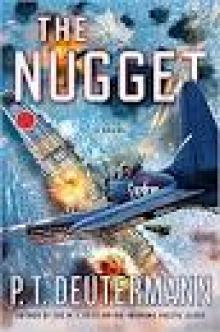 The Nugget
The Nugget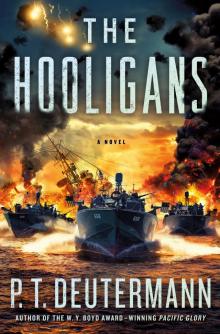 The Hooligans
The Hooligans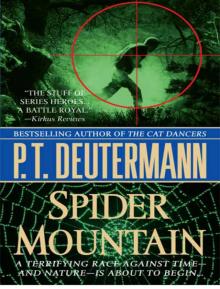 SPIDER MOUNTAIN
SPIDER MOUNTAIN![Cold Frame [retail] Read online](http://i1.bookreadfree.com/i/03/19/cold_frame_retail_preview.jpg) Cold Frame [retail]
Cold Frame [retail] Sweepers
Sweepers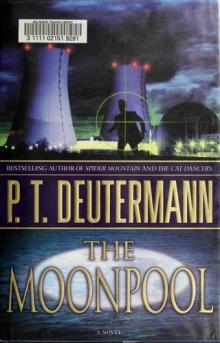 Cam - 03 - The Moonpool
Cam - 03 - The Moonpool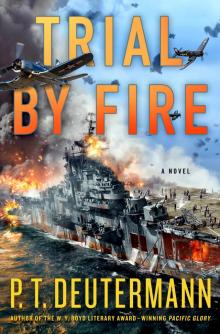 Trial by Fire
Trial by Fire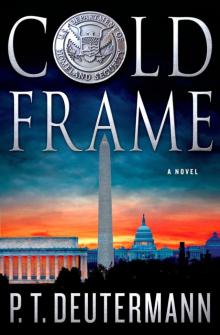 Cold Frame
Cold Frame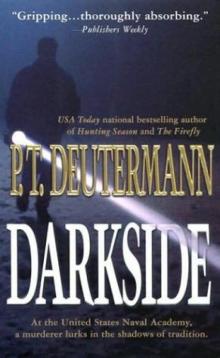 Darkside
Darkside Cam - 04 - Nightwalkers
Cam - 04 - Nightwalkers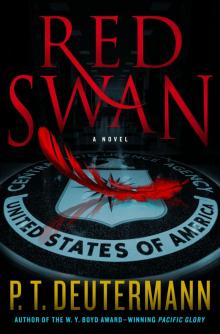 Red Swan
Red Swan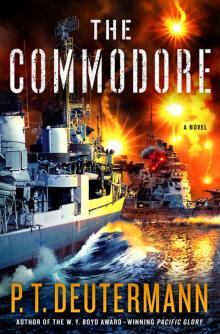 The Commodore
The Commodore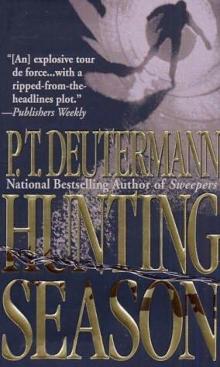 Hunting Season
Hunting Season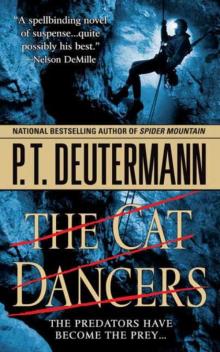 The Cat Dancers
The Cat Dancers Scorpion in the Sea
Scorpion in the Sea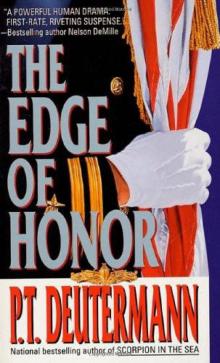 The Edge of Honor
The Edge of Honor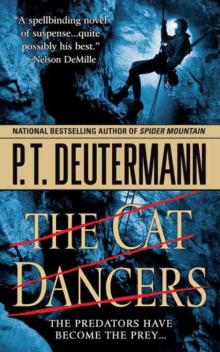 The Cat Dancers cr-1
The Cat Dancers cr-1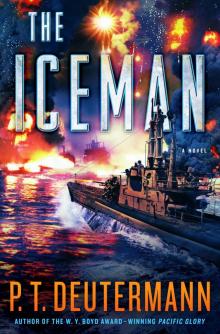 The Iceman
The Iceman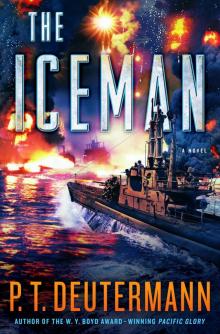 The Iceman_A Novel
The Iceman_A Novel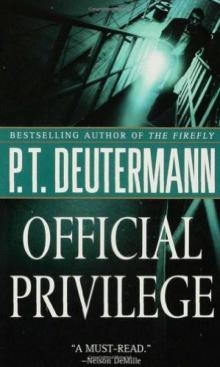 Official Privilege
Official Privilege Sentinels of Fire
Sentinels of Fire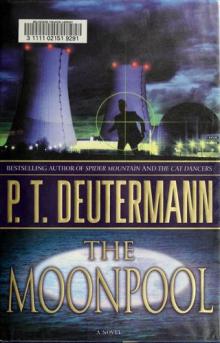 The Moonpool cr-3
The Moonpool cr-3 Nightwalkers cr-4
Nightwalkers cr-4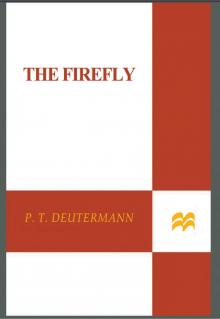 The Firefly
The Firefly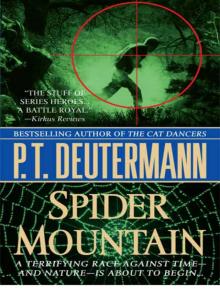 Spider mountain cr-2
Spider mountain cr-2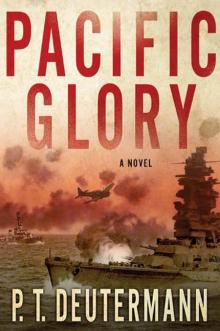 Pacific Glory
Pacific Glory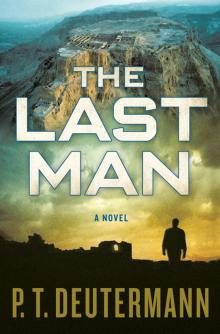 The Last Man
The Last Man